Montana is home to the bighorn sheep, known scientifically as Ovis canadensis. These magnificent creatures have a history as vast as the state itself. Once roaming the land in huge numbers, today they are a symbol of wildlife restoration, with about 5,700 living in the state, excluding the national parks.
We will examine the bighorn sheep’s journey in Montana from the time of Lewis and Clark to the present. Their characteristics, including their sociable nature and robust diet, allowing them to thrive in various habitats across the state.
We’ll guide you through some of the best places to spot bighorn sheep in Montana, from the Koo-Koo-Sint viewing site to Glacier and Yellowstone National Parks, and share insights for your personal bighorn sheep encounter.
- Related article: Wildlife Encounters in Montana
Montana’s natural beauty and the conservation of bighorn sheep lead to a greater appreciation of the state’s diverse wildlife. Join us as we explore the lives of these animals and the shared responsibility to preserve their legacy.
7 Key Takeaways on Montana Bighorn Sheep
- Montana’s bighorn sheep have a rich history of survival and conservation. Thanks to ongoing efforts, the state now boasts 45 populations.
- Understanding the characteristics of bighorn sheep, from their iconic horns and coat colors to their social nature, reveals why they are well-suited to Montana’s landscape.
- Top spots like Glacier and Yellowstone National Parks offer incredible opportunities to see bighorn sheep in their natural habitat.
- The Koo-Koo-Sint Bighorn Sheep Viewing Site provides a unique chance to witness these animals up close. It features informative signs and a meadow full of grazing sheep.
- Regions like Sun River Canyon and Gibson Reservoir near Great Falls are ideal wintering spots for bighorn sheep, offering accessible viewing opportunities.
- Montana’s approach to bighorn sheep hunting, which focuses on long-term management and impressive ram growth, has made it a premier hunting destination.
- Regulations in Montana ensure responsible hunting practices, including protection for native sheep and strict import guidelines for certain subspecies.
About Montana Bighorn Sheep
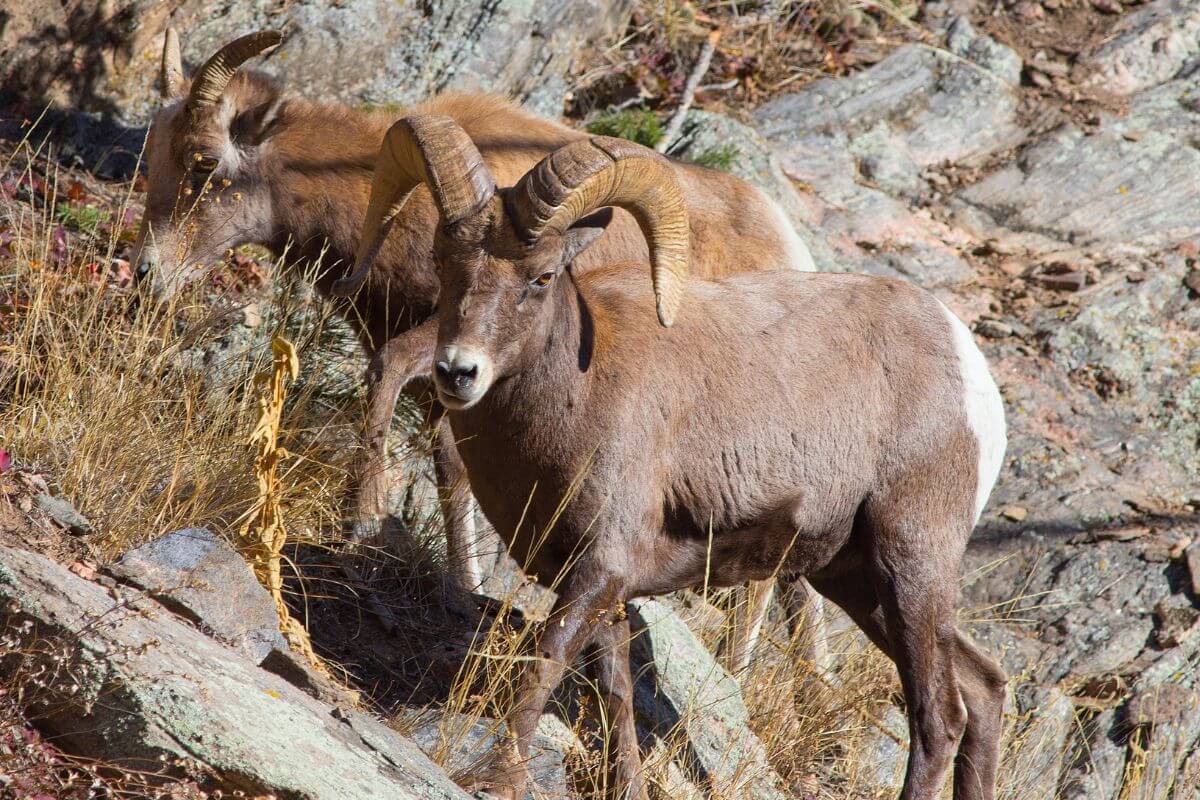
Let’s start by getting to know the bighorn sheep of Montana a little better. These amazing creatures are not just sheep but icons of the rocky cliffs and high mountains.
Living in some of the most rugged and wild terrains, Montana bighorn sheep are a wonder to behold. This section will take you through their habitat, unique features, and the challenges they face.
Montana Bighorn Sheep History
The history of Montana’s bighorn sheep is a tale of survival, decline, and resurgence. Bighorn sheep roamed freely before vast changes touched North America’s western lands.
Experts believe their numbers reached up to 100,000 in what is now Montana. At this time, bighorn sheep, like several other ungulates, thrived in large, widespread groups.
The story took a turn with the arrival of European settlers. By the early 1900s, things looked grim for the bighorns. Hunting and habitat loss pushed the species to the edge. It’s estimated that by then, their population in Montana had plummeted.
Yet, the spirit of these iconic animals couldn’t be broken. Efforts to restore their numbers began, marking a new chapter in their story.
Let’s peek into a timeline that highlights key moments in Montana’s bighorn sheep history:
| Year | Event |
|---|---|
| Pre-European Settlement | Biologists estimate up to 100,000 bighorns in Montana during this time. |
| 1805 | Lewis and Clark see their first bighorns near the Missouri River. |
| 1889 | Montana establishes a bighorn sheep hunting season. |
| 1907 | The bighorn bag limit is reduced from 8 sheep to 1. |
| 1910 | Domestic sheep production peaks at 5 million animals. |
| 1915 | Bighorn sheep hunting is closed indefinitely statewide. |
| 1922 | Canada supplies Montana with 12 bighorns for conservation. |
| 1937 | Federal funds for bighorn conservation become available. |
| 1941 | The bighorn sheep population reaches “a low ebb both in density and distribution.” |
| 1941–50 | Wildlife biologists establish several new populations of bighorns through trap-and-transplant. |
| 1950 | The bighorn population in Montana is estimated at 1,200. |
| 1953 | Montana reopens bighorn hunting season for the first time in 38 years. |
| 1984 | The largest die-off on record is 400 sheep along the Rocky Mountain Front. Another 250 died at the Beartooth WMA. |
| 1990 | Major die-offs in various herds total more than 1,400 sheep. |
| 2010 | State approves comprehensive bighorn sheep conservation plan. |
| Present | Montana boasts 45 bighorn populations, with 36 open to limited annual sheep hunting. |
The expedition of Lewis and Clark in the early 1800s noted the abundant sightings of bighorn sheep along Montana’s rivers, including the Missouri and Yellowstone Rivers. Their encounters marked the beginning of recorded history for these resilient creatures in Montana.
Today, Montana is a leader in bighorn sheep conservation. Notably, Wild Horse Island on Flathead Lake hosts a genetic line that has produced some of the largest Rocky Mountain bighorn sheep on record. Along with a successful 60-year track record in rebuilding bighorn populations, this has earned Montana international recognition for its wildlife management.
Montana’s journey with bighorn sheep reflects a deep commitment to preserving wildlife and a diverse natural heritage. The state’s ongoing efforts ensure that future generations can continue to marvel at the sight of these magnificent animals against Montana’s breathtaking landscapes.
Montana Bighorn Sheep Characteristics
Montana Bighorn Sheep are known for their impressive horn size and many other distinct features that help them thrive in the state’s varying landscapes. These large, muscular animals with curved horns are a sight to behold.
Here’s a look at the bighorn sheep’s physical characteristics:
| Physical Characteristic | Description |
|---|---|
| Coat Color | Their fur is grayish-brown on the outside but has yellowish-white underparts. |
| Rump Patch and Tail | You’ll notice a creamy-white patch around their small brown tail. |
| Horns | Large and curved, these horns are a prominent feature in both males and females. |
| Body Size | Big and muscular, bighorn sheep are built for rugged terrain. |
| Hooves | Their large, sturdy hooves are practical for their lifestyle. |
| Facial Features | They have distinctive facial markings and relatively small ears. |
So, what makes bighorn sheep unique?
- Sociable Creatures – Among Montana’s big game species, bighorn sheep are the most sociable. They often move and feed together, creating a strong community.
- Adaptive and Versatile – Bighorn sheep can be found in various habitats, making the most of the land. While they are primarily in the western part of Montana, the populations associated with the Missouri River Breaks are especially thriving.
- Diverse Diet – The bighorn sheep’s food habits are as varied as the landscape they inhabit. In winter, they feed on bunchgrasses and shrubs. In summer, their diet includes a wide range of grasses, sedges, and forbs. This flexibility and variation in their diet help them stay healthy throughout the year.
Bighorn sheep are true survivors, with characteristics that make them stand out among Montana’s wildlife. Whether it’s their iconic ram horns, ability to live in different habitats, or social nature, these animals are a key part of Montana’s natural beauty.
Best Places to Spot Bighorn Sheep in Montana
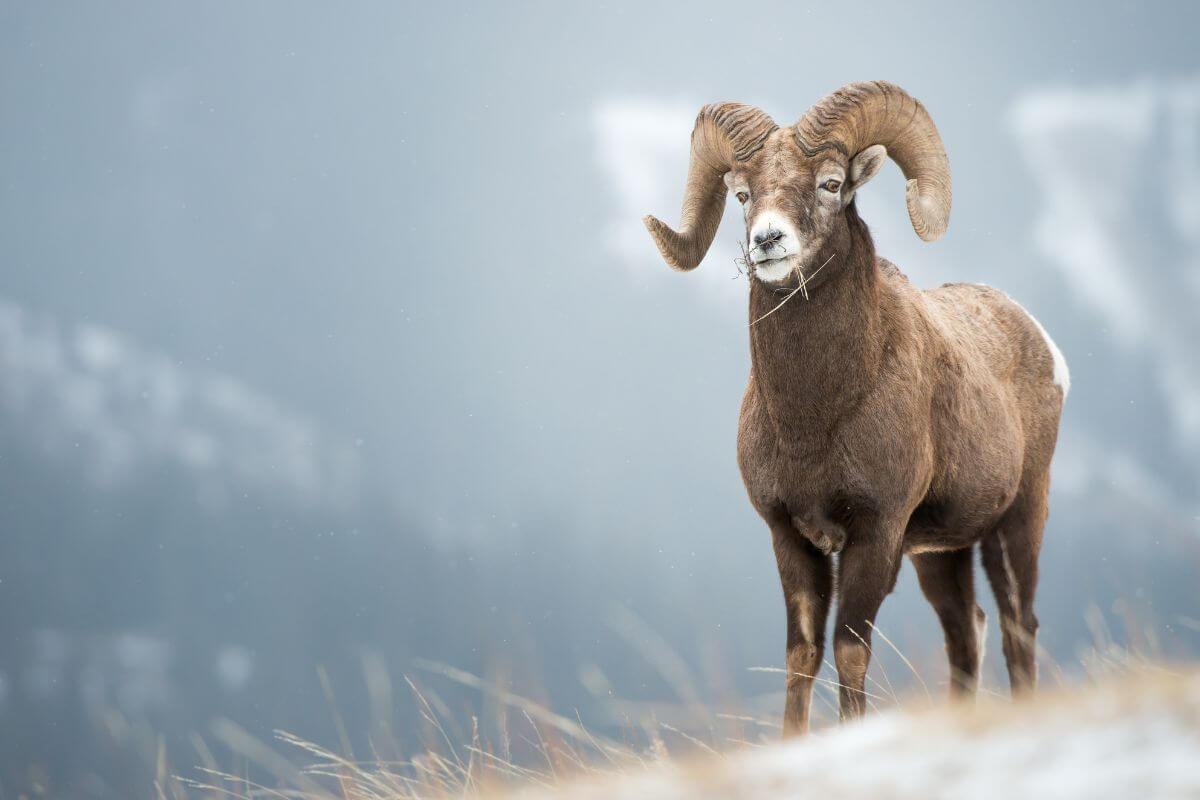
If you’re eager to see Bighorn Sheep in Montana, you’re in for a treat. This state offers some of the best spots to witness these magnificent animals in their natural habitat. From the heights of mountain ranges to vast, open landscapes, the state provides a perfect setting for Bighorn Sheep to roam.
Each location presents a unique chance to see wild sheep up close against Montana’s stunning natural beauty. Remember to bring your binoculars and camera for the best experience.
Koo-Koo-Sint Bighorn Sheep Viewing Site
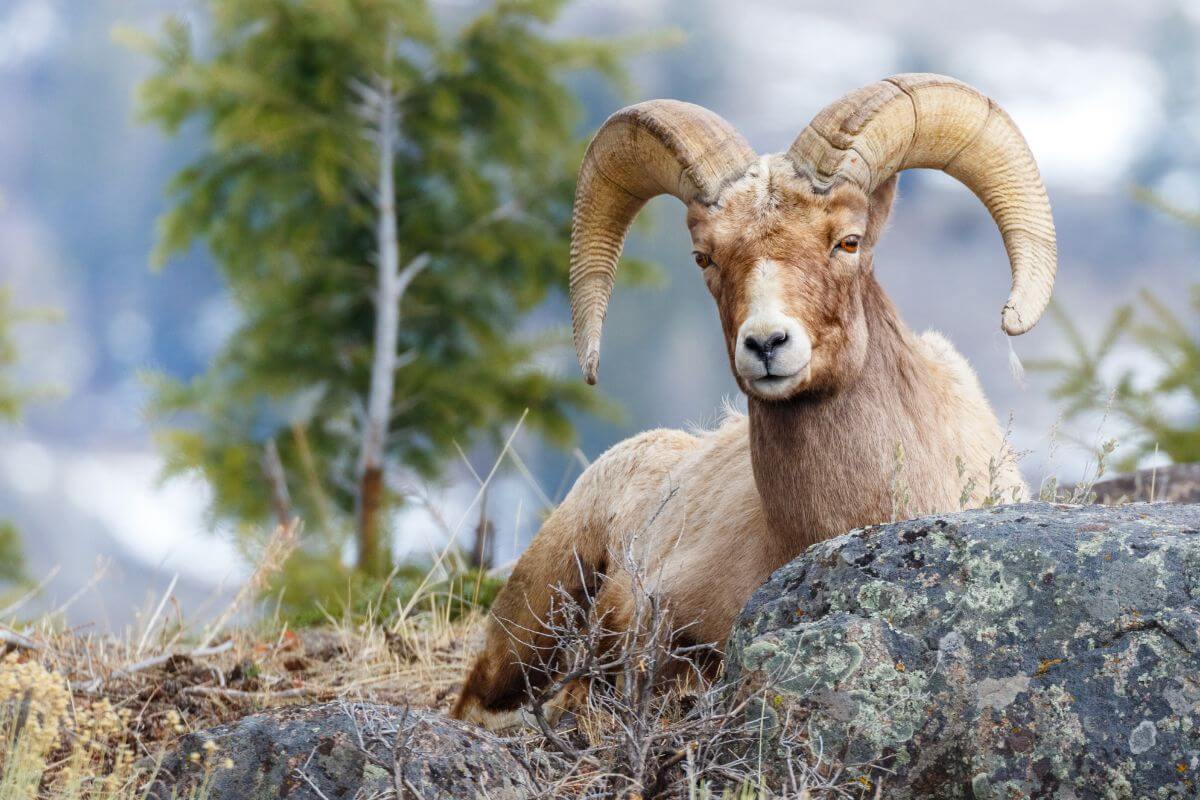
The Koo-Koo-Sint Bighorn Sheep Viewing Site is not your average stop. It’s a place where you get a front-row seat to the lives of American bighorn sheep as they graze and roam in a meadow just off Highway 200.
This spot near Thompson Falls, Montana, is part of the Lolo National Forest. What makes it special? Well, it’s adorned with informational signs about the bighorn sheep, their homes, and the very land you stand on.
You’re in for a treat if you plan your visit between October and December. This is when the meadow comes alive with 70 to 100 bighorn sheep. But don’t worry if these months don’t work for you. You still have a good shot at witnessing these magnificent creatures from October through May.
Why should this be on your must-see list? Imagine looking out your car window or from a viewing area and seeing these iconic animals up close against the stunning backdrop of Montana’s natural beauty. It’s an experience that’s hard to forget and one that offers insight into the lives of bighorn sheep.
Glacier and Yellowstone National Parks
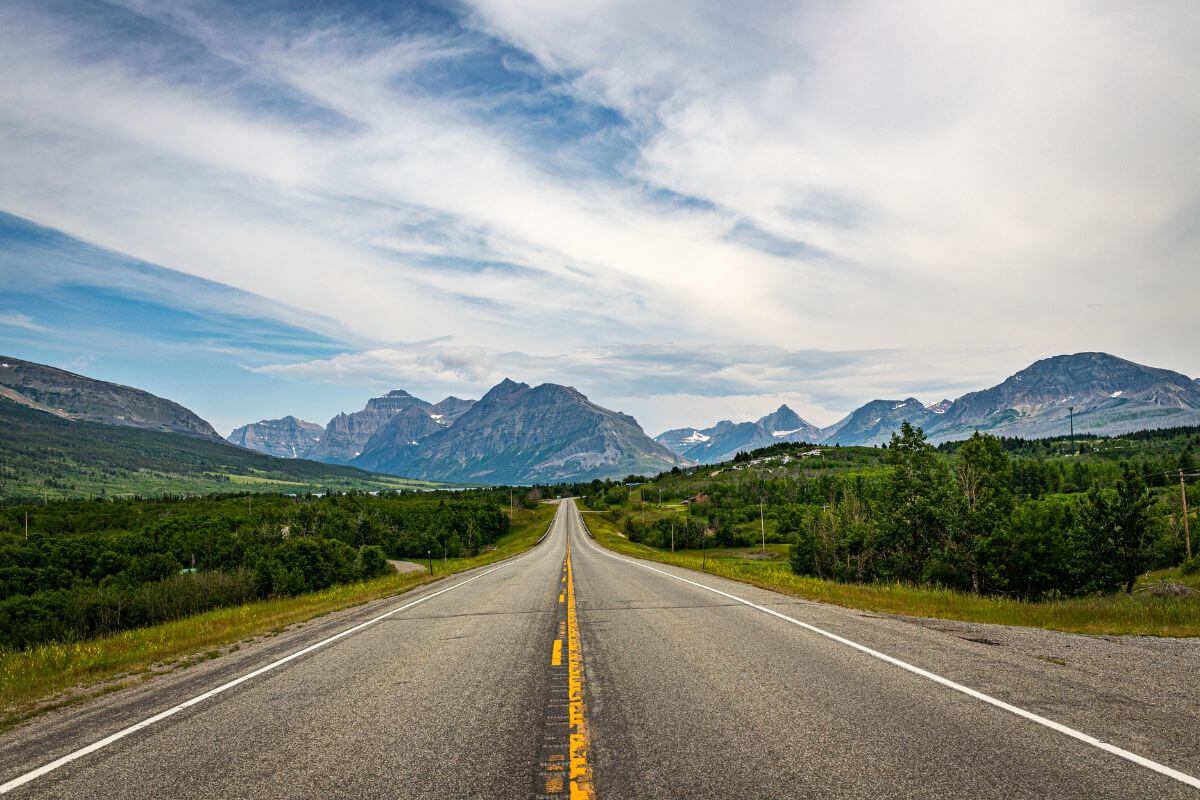
Seeing bighorn sheep in action is like getting front-row tickets to nature’s show. And if you’re in Montana, you’re in luck. Places like Glacier and Yellowstone National Parks are your backstage passes to witnessing these majestic creatures up close.
Here are some of the best spots to watch bighorn sheep in Yellowstone National Park:
- Yellowstone Hot Springs – Just outside Yellowstone National Park, near the Yellowstone Hot Springs off Highway 89, bighorn sheep often gather to display their strength and grace. This place is known for “sheep battles,” where male sheep compete to impress their potential mates. This spectacle takes place right across the bridge over the Yellowstone River.
- Mammoth Hot Springs – Another well-known location for bighorn sheep watching is between Mammoth Hot Springs and Gardiner, Montana. The cliffs here offer a perfect vantage point for those who enjoy watching wildlife.
Moving over to Glacier National Park, the Grinnell Glacier Trail isn’t just any hike. It’s a top contender for the most breathtaking trails in the U.S. You can catch bighorn sheep and mountain goats doing their thing.
A little tip to increase your chances of a sighting: Start early. Leave before the first water taxi, and you’ll thank yourself. The roundtrip is about 7.6 miles (12.2 km) without the taxi, but the real payoff is the wildlife you’ll see. For a quieter experience, aim for an early September visit to avoid the bustling crowds.
So, for those looking to meet a bighorn ram or two, these accessible locations are calling. Whether it’s battles or the quiet beauty of these mountain sheep, your Montana adventure promises a glimpse into the lives of these incredible animals.
Sun River Canyon and Gibson Reservoir
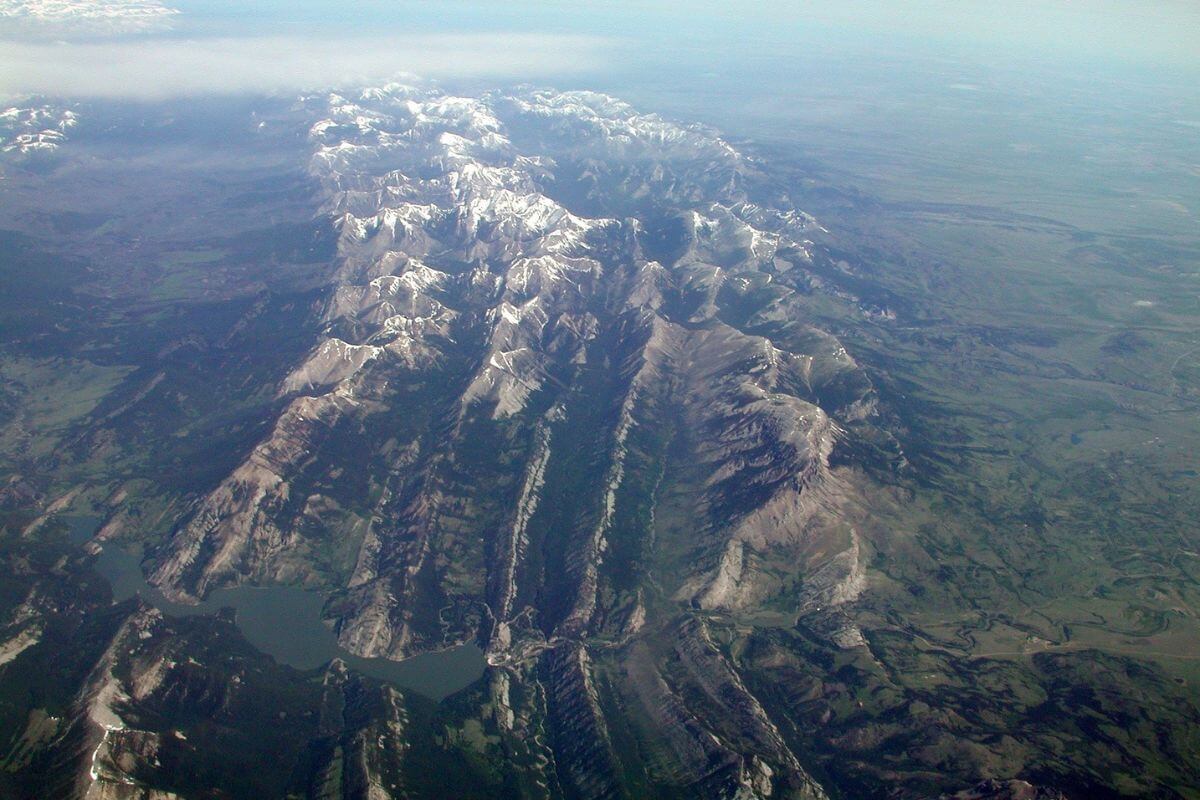
Sun River Canyon and Gibson Reservoir, near Great Falls in Montana, offer prime spots to see bighorn sheep. A 45-minute drive near Augusta lands you in an area where a significant wintering herd resides. This herd is an impressive part of the larger Sun River Canyon group.
Around 1,000 big horn sheep make Gibson Reservoir their home from January to April. If you’re there during those months, you may even spot them in the Gibson Dam parking lot.
The area has unique weather patterns with unusually little snow. But that allows for easier access for vehicles and better opportunities to view wildlife.
If you’re ready to see the bighorn sheep for yourself, here’s how to get there from Augusta: Drive northwest on Sun River Road for 19 miles (about 30.6 km) until you reach the Gibson Dam parking lot.
Keep your eyes peeled for the sheep in the last 4 miles (6.4 km). Witnessing these incredible creatures in their natural habitat is a journey worth every mile.
Bighorn Sheep Hunting in Montana
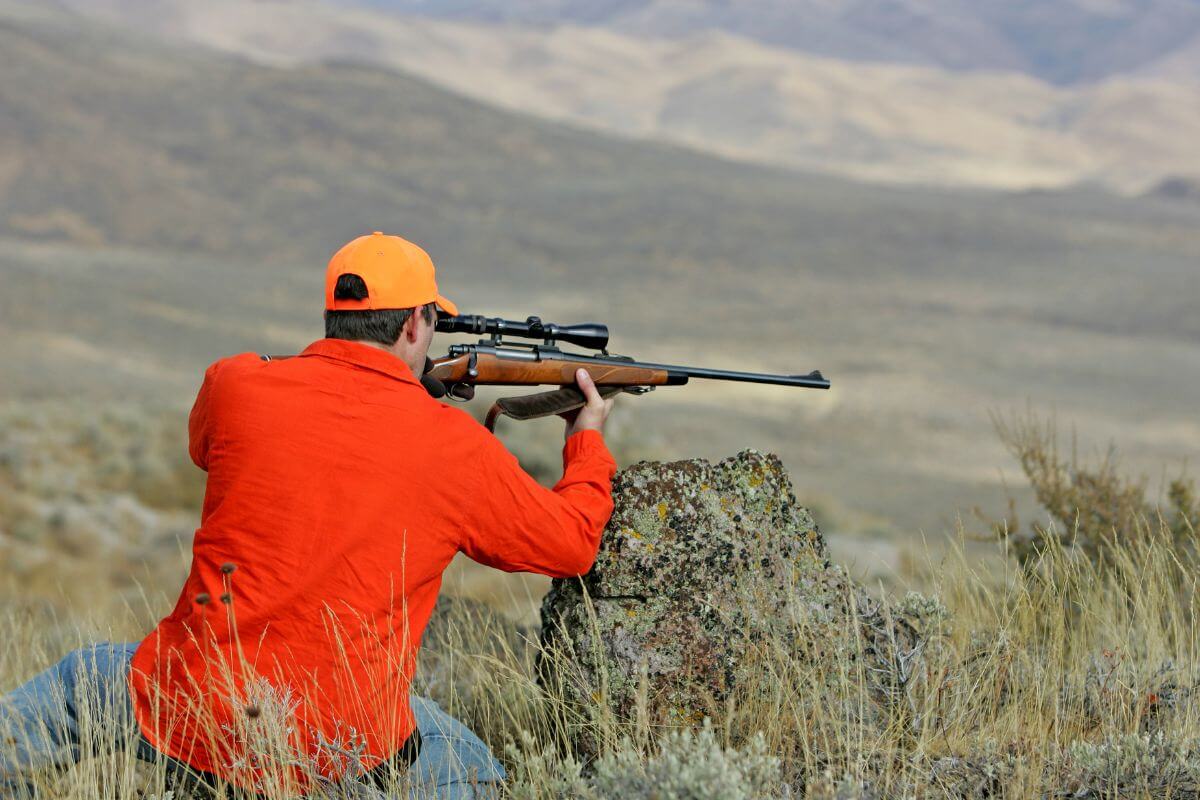
Montana has become a top destination for those looking to hunt big rams. Over the past 40 years, the sheep populations in the Rocky Mountains have increased, leading to more impressive book rams across the region.
Since 2006, Montana has stood out by producing more 200-plus-point rams than any other state or province. These numbers show that Montana’s approach to sheep management is working, with the state now home to nearly half of the impressive Rams in the Boone and Crockett record book.
Montana stands out in bighorn sheep hunting for several reasons, including, but not limited to:
- Better Environment for Horn Growth – The hunting grounds, particularly in the Missouri Breaks and unlimited districts, offer a better environment for horn growth. Despite not being lush and fertile, the area’s soil supports more nutritious grasses and forbs than the high, rocky terrain where most bighorns live. This means the rams can grow bigger, more impressive horns.
- Long-Term Success Strategy – Montana’s strategy focuses on the long-term success of the sheep. The state issues fewer sheep permits than others, giving the rams more time to mature and pass on their trophy genetics. This careful balance ensures enough mature rams with impressive horns, increasing the quality of the hunting experience.
- Accessibility and Regulations – It is interesting that Montana is the only state where you can get a bighorn sheep tag over the counter, making it more accessible for hunters. However, there are regulations in place to protect the native sheep.
For instance, male argali sheep, a subspecies that can weigh over 300 lbs with horns up to 5ft long, are off-limits for import due to their threatened status. This measure aims to prevent disease spread and hybridization, protecting the local sheep population.
If you’re considering a bighorn sheep hunt in Montana, check the Montana FWP regulations for hunter safety. These rules cover important details like application deadlines, sheep harvest quota, drawing process, and the application process. This step is crucial to ensure you hunt responsibly, respecting the game animals and fellow hunters.
Montana Bighorn Sheep Final Thoughts
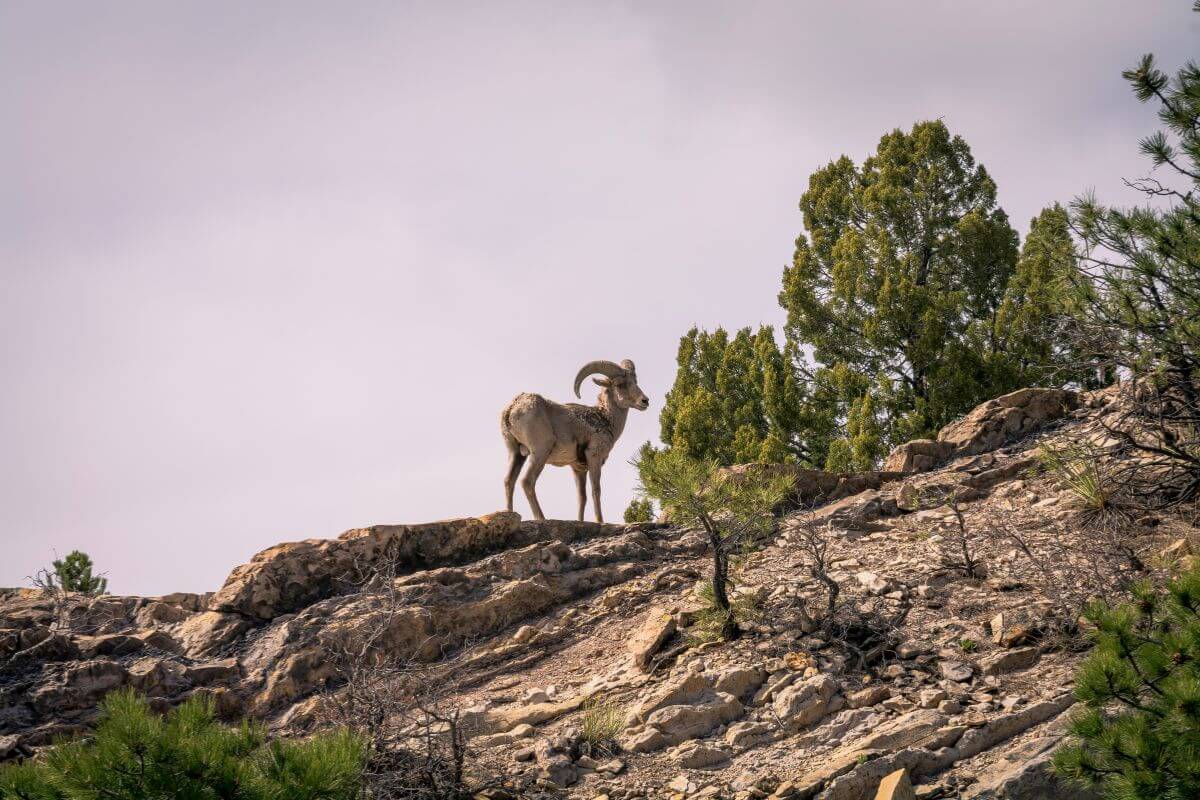
Montana’s bighorn sheep are resilient symbols of the state’s commitment to wildlife conservation. With a history marked by challenges and a future secured by dedicated efforts, these iconic creatures now thrive across Montana, their populations a testament to successful conservation strategies.
Visitors have the privilege of witnessing these magnificent animals in their natural habitats, from the sociable herds of Glacier National Park to the informative Koo-Koo-Sint Bighorn Sheep Viewing Site near Thompson Falls.
The story of Montana’s bighorn sheep extends beyond observation, reaching into the realm of responsible hunting. Thanks to a management approach prioritizing the sheep’s long-term health and genetic diversity, Montana has become a premier destination for those seeking impressive ram hunts.
Despite the unlimited hunts, the state maintains strict regulations to protect native species and ensure sustainable hunting game practices. This balance allows bighorn sheep and hunting enthusiasts to continue enjoying Montana’s diverse and breathtaking landscapes.
Montana Bighorn Sheep FAQs
1. How Much Is a Montana Bighorn Sheep Tag?
In Montana, a bighorn sheep tag costs $125 for residents and $1,250 for non-residents. This tag allows hunters to pursue bighorn sheep in designated hunting areas within the state, subject to regulations and quotas set by the Montana Fish, Wildlife & Parks Department.
2. Can You Hunt Big Horn Sheep in Montana?
Bighorn sheep are one of Montana’s game animals. Hunting bighorn sheep is permitted through a regulated hunting program. The Montana Fish, Wildlife & Parks Department manages bighorn sheep hunting seasons and issues tags.
3. Do Bighorn Sheep Live in Montana?
Bighorn sheep live in Montana. They inhabit various mountainous regions throughout the state, particularly in areas with rugged terrain and suitable habitats such as cliffs, rocky slopes, and grassy meadows. Montana supports several bighorn sheep populations, an iconic species in the state’s wildlife diversity.
4. What Do Bighorn Sheep Eat in Montana?
In Montana, bighorn sheep graze on grasses, forbs, and shrubs in their mountainous habitat. Their diet can include grasses such as bluegrass and fescue and forbs like clover and yarrow.
5. How Do You Get a Bighorn Sheep Tag in Montana?
To obtain a bighorn sheep tag in Montana, hunters have two main options: Limited and Unlimited Bighorn Sheep hunting licenses. Limited licenses are awarded through a special drawing, which aims to restrict the number of hunters in specific hunting districts.
On the other hand, Unlimited licenses have no limit on the number sold but are restricted to one per hunter. These licenses can be purchased over the counter (OTC) from License Providers, including the FWP Online Licensing System, subject to availability.
Dive deeper into the world of Montana through these excellent reads:
- https://fwp.mt.gov/conservation/wildlife-management/bighorn-sheep
- https://fieldguide.mt.gov/speciesDetail.aspx?elcode=amale04010
- https://fwp.mt.gov/hunt/regulations/bighorn-sheep
- https://fwp.mt.gov/binaries/content/assets/fwp/montana-outdoors/bighornsheep.pdf
- https://www.fs.usda.gov/recarea/lolo/recreation/recarea/?recid=10316&actid=62
- https://www.flickr.com/photos/vitrain/183816804

